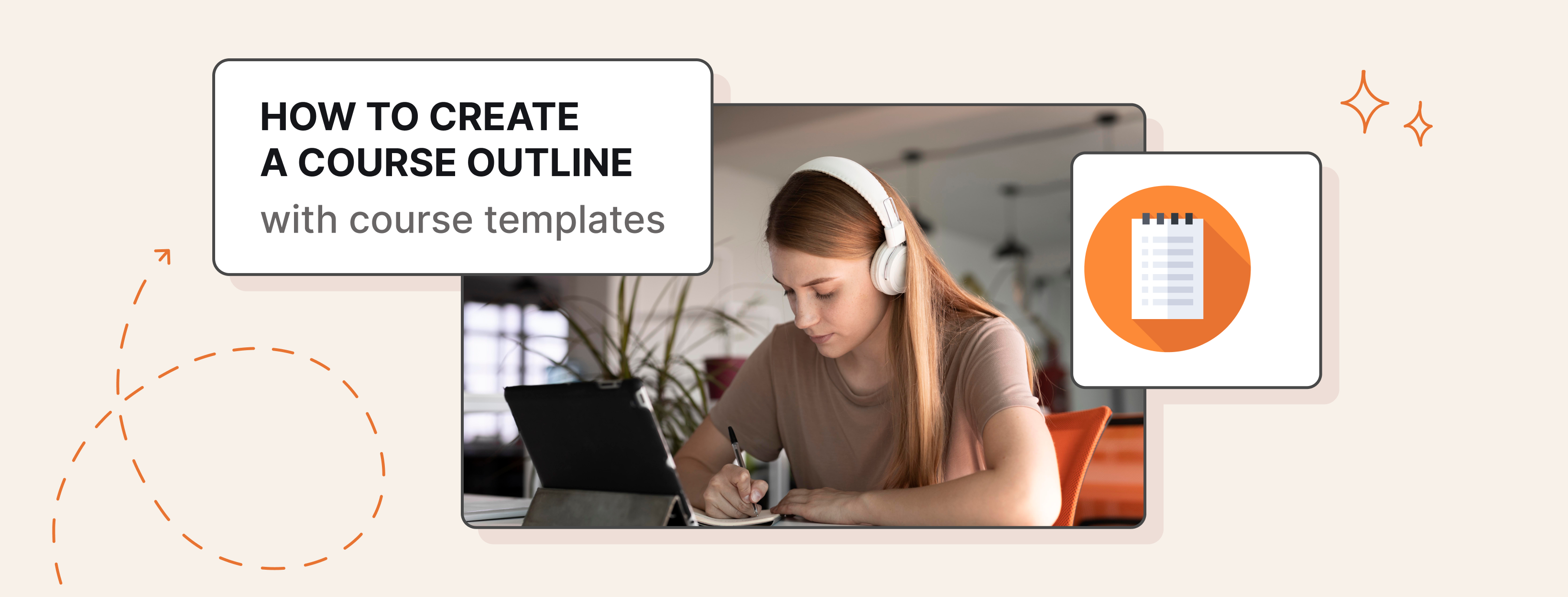 Nailing the Price Change Talk: Effective Messaging Strategies, Tips & Templates
Nailing the Price Change Talk: Effective Messaging Strategies, Tips & Templates
Learn how to effectively communicate price changes to your customers with our expert tips. Balance customer trust and loyalty while scaling your business!

You have a wonderful concept for an online course but don’t know where to begin. The early steps of an online course are difficult for the majority of first-time course creators. A course outline can help you focus your thoughts and build your online course without experiencing writer’s block. In this blog post, we will talk about the process of creating an online course outline using instructional design concepts.
A course outline is a broad course plan that organizes the content. It might take the shape of a storyboard or a list. Having an outline in place can help you achieve your instructional goals without deviating from the road, as well as schedule student activities and evaluations ahead of time.
Typically, a course design outline contains the following:
Now that you know what a course outline is, let’s look at how to create one. Here are the stages of designing an online course outline. The booklet will walk you through the processes and provide extra resources.

While it may appear apparent, the finest teachers have a thorough understanding of their subject, which has a substantial influence on students’ learning and engagement. You can’t teach something if you don’t know more than your students.
Research your subject as much as you can, then brainstorm all of the subjects and subtopics you want to cover in your course. Classifying themes will assist you in selecting the finest ones for your course and in preparing your course outline.
Learning entails a shift in competence, ability, understanding, attitude, belief, or the achievement of any other learning objectives you may have established. To do so, you must be intimately familiar with your pupils in order to guide them from point A to point B.
As a result, you must examine what pupils already know about your topic and their passion for studying. How much experience do they have as students? Have they previously taken a comparable course? Do they have all of the course prerequisites completed? The better you understand your audience, the better you will be able to produce content for them.
The learning objectives are the “larger picture” of what you want your students to attain after completing the course. Our page on learning goals and objectives has further information. Learning objectives are broad, general statements that describe what we want our pupils to learn and give direction, emphasis, and cohesiveness.
It is now time to organize your objectives and modules into a lesson plan. You’ll need the correct activities to create a superb course. Will your pupils have access to video courses, eBooks, PDFs, practice exercises, exams, or other learning opportunities? Finally, using those exercises, develop a thematic outline of your course. A thematic outline might assist you in organizing comparable subtopics under more general topics. Here’s an example of how to structure a topical outline.
There are various strategies to have such a positive influence on your kids. You must decide which approaches to employ and what activities will be linked with each strategy. A combination of strategies can help break up the monotony but maintain a consistent writing and speaking style throughout the course.
Online course methods
Last but not least, you must establish certain evaluation checkpoints at which you will test your pupils’ understanding. Attempt to have a range of knowledge exams. Ungraded tests allow students to practice their information, whereas self-assessments are preferable for reflection and goal-setting.
For example, if you are teaching others how to start their own businesses, a practical evaluation may include developing a business plan and soliciting comments from friends and family on social media. If you want to give a certificate of completion or CPE credits, you will also require scored exams or graded assignments.
There are a few variations between preparing a training course and planning a general-purpose online course. It is considerably different to construct a training outline for workers or partners. For example, training is required, goals are created based on corporate priorities, and results are tracked. In this situation, your outline could go through a somewhat different procedure.
Assessment evaluation
An assessment evaluation is the first significant distinction. If you are entrusted with developing a training course, there is a strong likelihood that the firm employing you has already analyzed its training needs and recorded them.
If not, you should do an assessment evaluation to determine the training needs. Training requirements are comparable to learning goals and objectives, but they are particular to the individuals or departments requiring the training. It is often a one-time requirement from an organization to fix certain weaknesses.
Adult education principles
Adults are the intended audience for the training. They may have some industrial or job experience and will be looking to use what they have learned in the workplace. Make the training more practical by using real-world examples and allowing participants to draw on their years of expertise.
Adult education principles can help you do training according to their needs:
Evaluation and tracking of training
Finally, assessing the results is an important aspect of training. You must develop robust assessment activities and prepare ahead on how to quantify performance. You will also need to include stakeholders in determining how success will be measured. Compliance training, for example, may involve a set amount of video viewing hours, but electrical engineering training might include a practical examination.
It is also critical to determine how to gather and report outcomes. The HR department may need a final test leading to a downloaded certificate if you are building an online course for training reasons.
You may be required to collect grades, assignments, or physical exams. Several learning management systems contain the grade book and reporting tools you want. Incorporate assessment activities like tests, on-site testing, simulations, or other types of evaluations in the course outline for training, and arrange for certifications or reporting needs.
Are you prepared to start writing your curriculum right away? To get you started, consider this effective advice: Begin with Trible, a course platform, and benefit from high-quality template options for course creators. Use Trible to construct the course structure and select how to lay out the course, generate a live outline, upload the material, and then set out the remainder over the next two weeks.